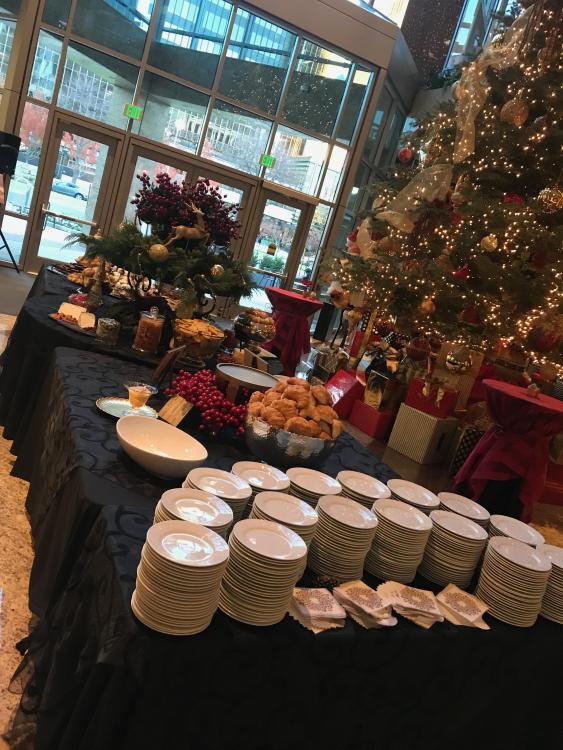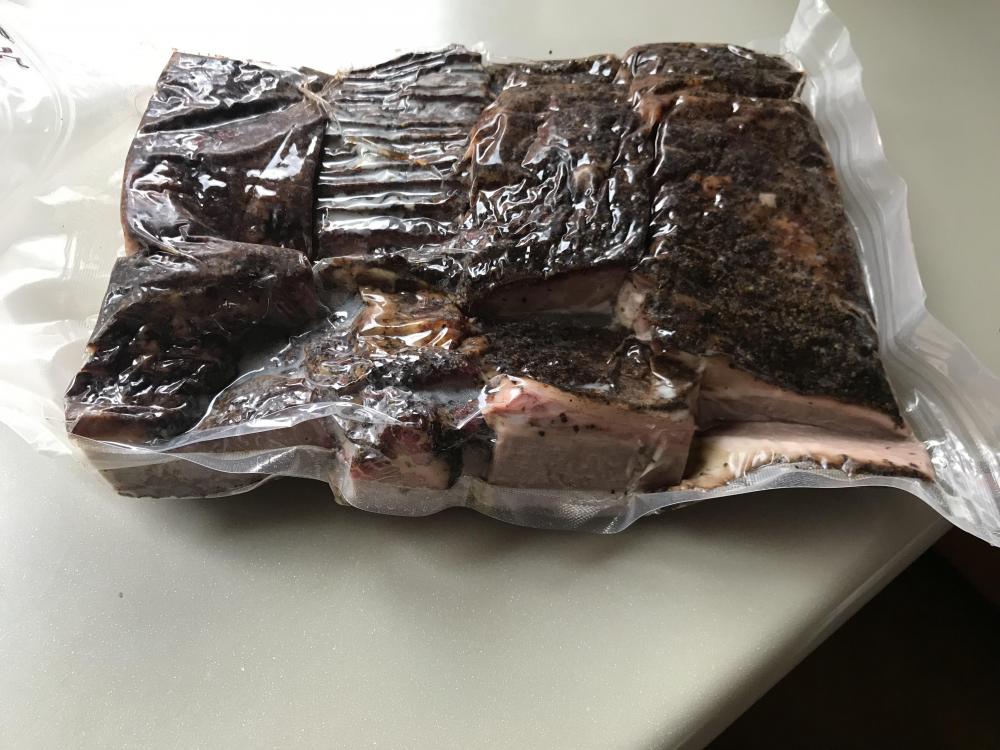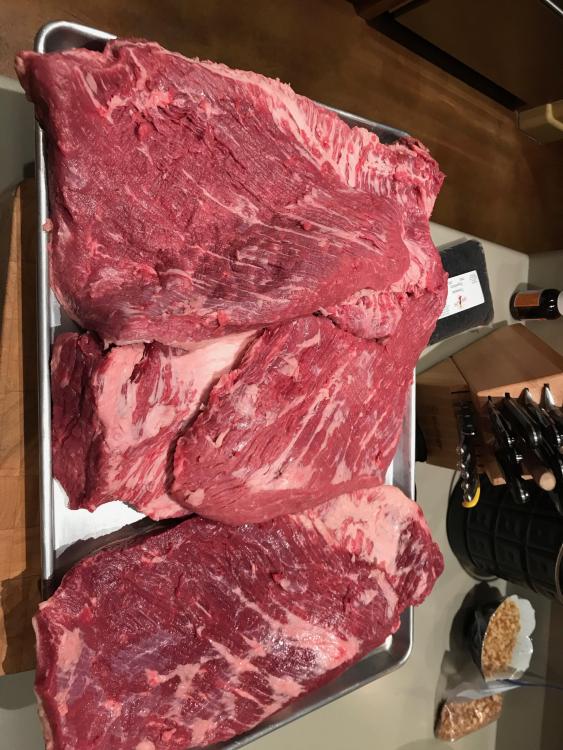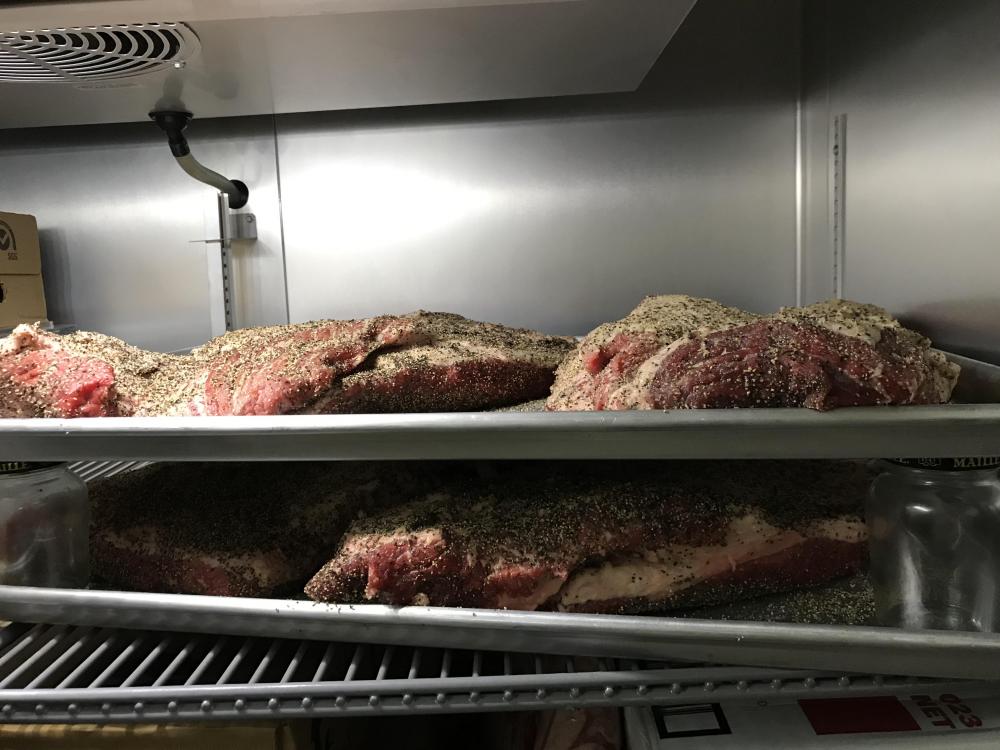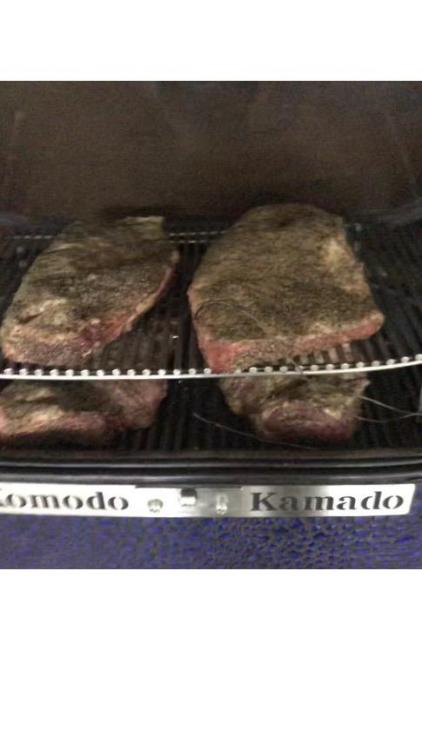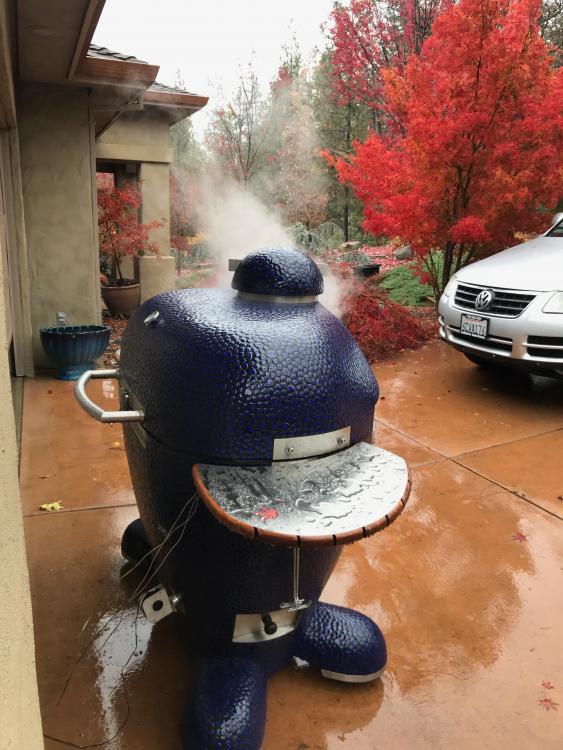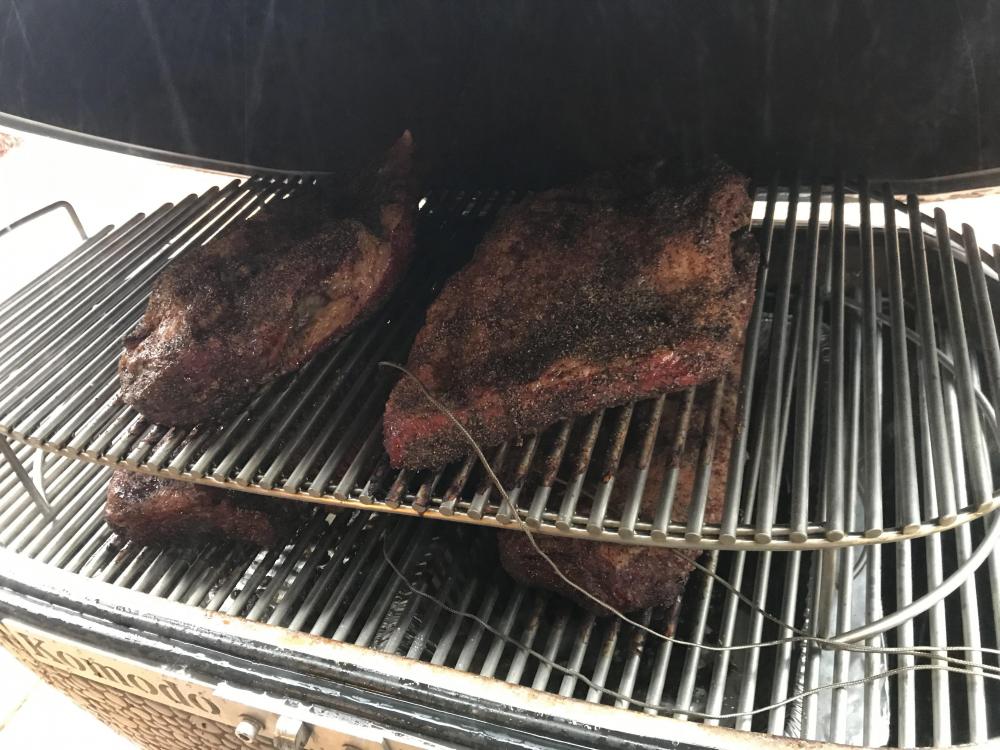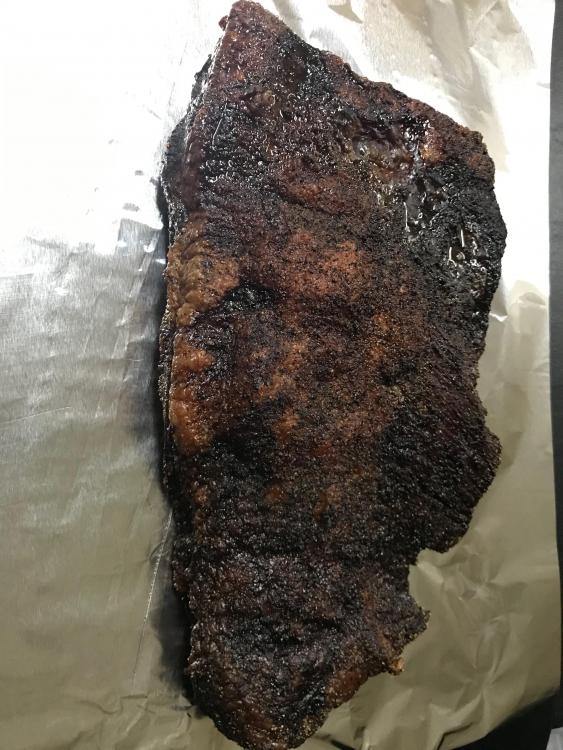-
Posts
49 -
Joined
-
Last visited
-
Days Won
1
Lannoos last won the day on April 6 2016
Lannoos had the most liked content!
Reputation
56 ExcellentAbout Lannoos
-
Rank
Member

- Birthday December 28
Profile Information
-
Gender:
Male
-
Location:
Meadow Vista, CA
Recent Profile Visitors
2,754 profile views
-
Dennis, I'm interested in this product, can you send me samples of each material? Scott
-
Update: IMG_1443.HEICIMG_1443.HEICEspresso machine has landed and I will say that the Niche Zero is more than adequate to the task. My Lucca M58v2 seems pretty similar to the Profitec Pro 700 (the Lucca M58 v2 is a custom build for Clive Coffee from the Italian Company QuickMill). Both are Dual Boiler, PID controlled machines, the biggest difference I could see was the Profitec Pro 700 uses knobs for Steam and hot water where the M58v2 uses joysticks. So the Nice Zero can grind amazing coffee for pour over and espresso with a well indexed dial that allows you to move from one coffee brewing technique to the other effortlessly, maintaining your precise grinds for each! Nearly zero retention means that after a grind or two, you will find that 20g's in means 20g's +/- .1g out. Can easily grind so fine that NO SHOT will come from the machine! Probably the same with other high end grinders but I was surprised! The Espresso learning curve remains somewhat a work in progress for me, but I will say that it sure beats going to my local 3rd wave coffee shop for anything other than freshly roasted beans. I think I will leave the roasting to the experts for now. Mac, did you ever get that Profitec Pro 700? I'm sure that you could spend a lot more money and not get any better performance as a home barista making a cup or two a day. I think anything more capable will really blur the lines between personal and commercial. I don't need (or want) commercial personally, but the coffee sure is good! https://clivecoffee.com/products/lucca-m58-espresso-machine-by-quick-mill
-
I have a cyberQ Wifi, but not the cloud version. WIFI controller is running in infrastructure mode, so I get connectivity where ever I am via Cellular data connection back to my router. Pit Viper pushes snuggly into my 23 and 42 KK Guru ports, no adaptor needed.
-

Loading a container of Coffee Lump Today!
Lannoos replied to DennisLinkletter's topic in KK Announcements
Great news Dennis. Perseverance wins! -
was going to buy Green egg 4 years ago too. Then my wife found the KK online and, well you know what happens next.. Quite interestingly if first heard about the Niche Zero on this forum quite a while ago. I've been curious ever since and after looking at the price/performance ratios implied on commercial burr grinders, it really seemed like a no-brainer. Can't have Stellar coffee without Stellar beans and a stellar grinder! Next will be the espresso Machine. Looking seriously at Clive Coffee in Portland, Oregon. They have a machine that seems to hit all the right notes. Once I get the grinder, I will have one shipped down for an audition. Will keep you posted on my progress. would certainly enjoy reading any comments one might post to help enlighten me on the journey toward a balanced coffee system: https://clivecoffee.com/products/lucca-m58-espresso-machine-by-quick-mill
-
I ordered my Niche Zero in January and expect that it will be shipping any day now. I told myself if I ordered it, i would forget about it and be pleasantly surprised when, months after it was paid for, it magically arrived at my door. The "completely forgot about that" part of my plan was never realized, but I do so hope it shows up soon so I can satisfy my need to see just how bad the 89 dollar grinder i use today really is!
-

CoConut Shell Charcoal - Light in the tunnel...
Lannoos replied to DennisLinkletter's topic in KK Announcements
I'm looking forward to a pallet or two in northern California. Anyone want to work together together to offset the cost? PM me and we'll work out the details. -
don't know about the rest of ye, but coco char is unparalleled for low n slow and neutrality. Looking forward to meeting the next transport into Long Beach!
-
OK, here is the epilogue to this story. Can it be done? Absolutely! After many hours of experimentation and managing challenges during the 4 cooks of 4 Briskets each, I can offer the following advice: 1 - Fill your charcoal basket with double the charcoal you thought you would need. Brisket is not predictable from cook to cook and more meat means more mass. More mass means more time. More time means more charcoal. I came very close to running out during cook 3 and it really messed with my sanity in the middle of Sunday night. Trust that the cook will shut down in an orderly when you close the vents, even if you have 20 extra lbs of fuel in the basket 2- cooking more than 4 brisket would require a very robust rendered fat capture strategy. I used two foil covered heat deflectors of a centered load of charcoal with 2 large HD Foil roasting pans (2 liters of water in each) to catch fat. The briskets were aligned with the pans on the main and grates. This worked very well, but note that after two consecutive cooks, I filled almost 4 750ml wine bottles with the rendered fat. Had I stacked 3 over 3, I'm pretty sure at least 1L of fat would have landed in the firebox below. That would not be good! 3- I cooked the briskets at 240 degrees. I think that preserved the low and slow technique but did help with move me through the stall. i never did wrap a brisket for the cooks and the bark was AWESOME. Rub was Aaron Franklin's secret recipe (1 part coarse ground pepper and 1 part Himalayan salt) 4- I did use my CyberQ wifi to manage temp. That provided some very much needed confidence in the overnight hours except when I ran low on fuel. See item 1 5 - the jiggle at 190 to 200, which was the range I pulled off all meat, was very much what you would see on YouTube. Give'em a push and what them Hula dance. I pulled all meat at once since I knew my slices would be 1/4" and toughness would not be a problem 6 - Rested for 4 hours, then refrigerated overnight, in the morning I sliced it cold, vacuum-sealed and returned to the fridge. 2 hours before service I dropped them in a 140 degree water bath, held them for 2 hours, then plated and served. You would never have known that this brisket was cooked days earlier. Each vacuum-sealed bag had the same Jiggle as the freshly cooked brisket and if you pushed too hard on the bag, you could leave a divot. The moisture content and all else were perfect. we served 95lb's of Brisket to 500 people in less than 2 hours (along with Salmon, Chicken and many other items) and everyone enjoyed the meal. Nobody knew we were cooking Brisket in ice-chests. It took longer to empty the water from those Ice chests than to clean up the mess from Service! In closing I would like to thank all who commented and encouraged me on this forum. I have a new arrow in my quiver and would highly recommend that anyone who wants to have a predictable smoked brisket dinner service for a large group use this outline and add your own knowledge and special touches. You will not be disappointed! A few photos: the room before service with the basic structure for the main courses and desserts laid out: the line up end: unfortunately I did not have time to get any photos of the final product, you'll just have to trust me, it was loved by all! Merry Christmas Forum, I'm going to take a long nap!
-
Sage advice for sure.
-
I will update this thread with my experiences on the sous vide re-heat. Here is one of the sliced packages. I've done this on a much smaller scale with good results to date. Going big does pose some challenges that will need to be overcome, but I'm confident this will work out.
-
OK, So the first cook went off effortlessly on 4 packers, I did a heavy trim to reduce the rendering, as 4 packers un-trimmed could create a lake in my charcoal basket. seasoned and cooled in the fridge. Next was to get the cook set up, so I used about 15 lbs of coco charcoal in the center of the charcoal basket, installed two heat deflectors over the heat source, then two large disposable aluminum roasting pans to catch drippings. I lit the charcoal and installed the main grate, temp probes and DigiQ wifi. heat soaked to 240 degrees then added the meat directly over the roasting pans with good spacing for air flow. things progressed, but very wet and cool all day. and then, the stall..... decided not to wrap as with all the rain, humidity was 100% I feel that the results (about 11 hours later) were acceptable. I am working on a job for a large group, so i have a few more of these cooks to do over the coming days so as I learn more, I will post those findings as well. Here is one of the briskets from this cook prior to wrapping and resting. A 'Huge Thank You' to all who contributed via comment and encouragement to this thread. I'm pretty sure I could cook six briskets at once, but I think 4 is optimal.
-
I normally trim ~3.5 to 4lbs of fat when prepping a full (USDA PRIME) packer, so I do remove a good deal of the slabbed fat. I still get significant rendering during the cook of a single brisket (another 2-3 lbs of liquified fat). I figure that I'll need to multiply that figure by the number of Briskets cooked simultaneously, so basically 12-18lbs of rendered fat or the equivalent of a whole untrimmed packer brisket. Do you have any experience in partially separating the Point prior to the cook so that more surface area receives direct contact with the smoke?
-
I have another question regarding rendered fat management. I would imagine that 4-6 briskets will generate about 4-6 times the rendered fat. I have some reasonably large HD Foil roasting pans, but I was wondering if anyone has a more elegant suggestion for capturing the fat before it saturates my cooker! Thoughts?
-
Tekobo The KK and the venue are about 60 miles apart so I cannot rely on anything other than advanced preparation, although you bring up a good point about the final cook timing, as that meat could be transported in a cooler resting and ready to slice while the earlier couple of cooks can be chilled, sliced, bagged and then heated through gently via sous vide. I have a number of Joule Immersion circulators so capacity should not be an issue, but Fresh off the KK is always the best way to go. I think I will try and wrap my head around the timing to see if that final cook can be accomplished so that it ends about 6 - 8 hours prior to service and with all that meat resting together in a large Yeti, I should have no trouble holding safe temps. Thank you for the suggestion! Scott







